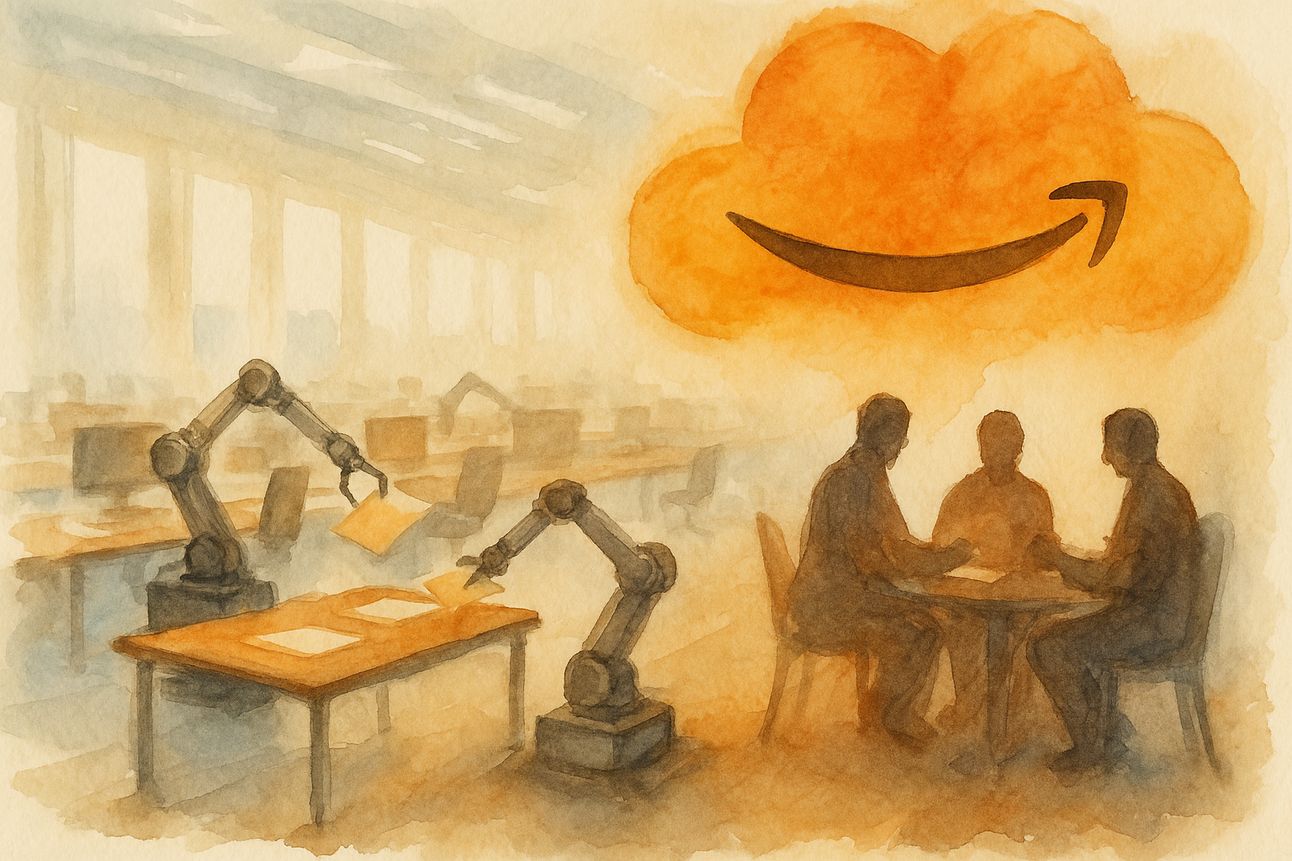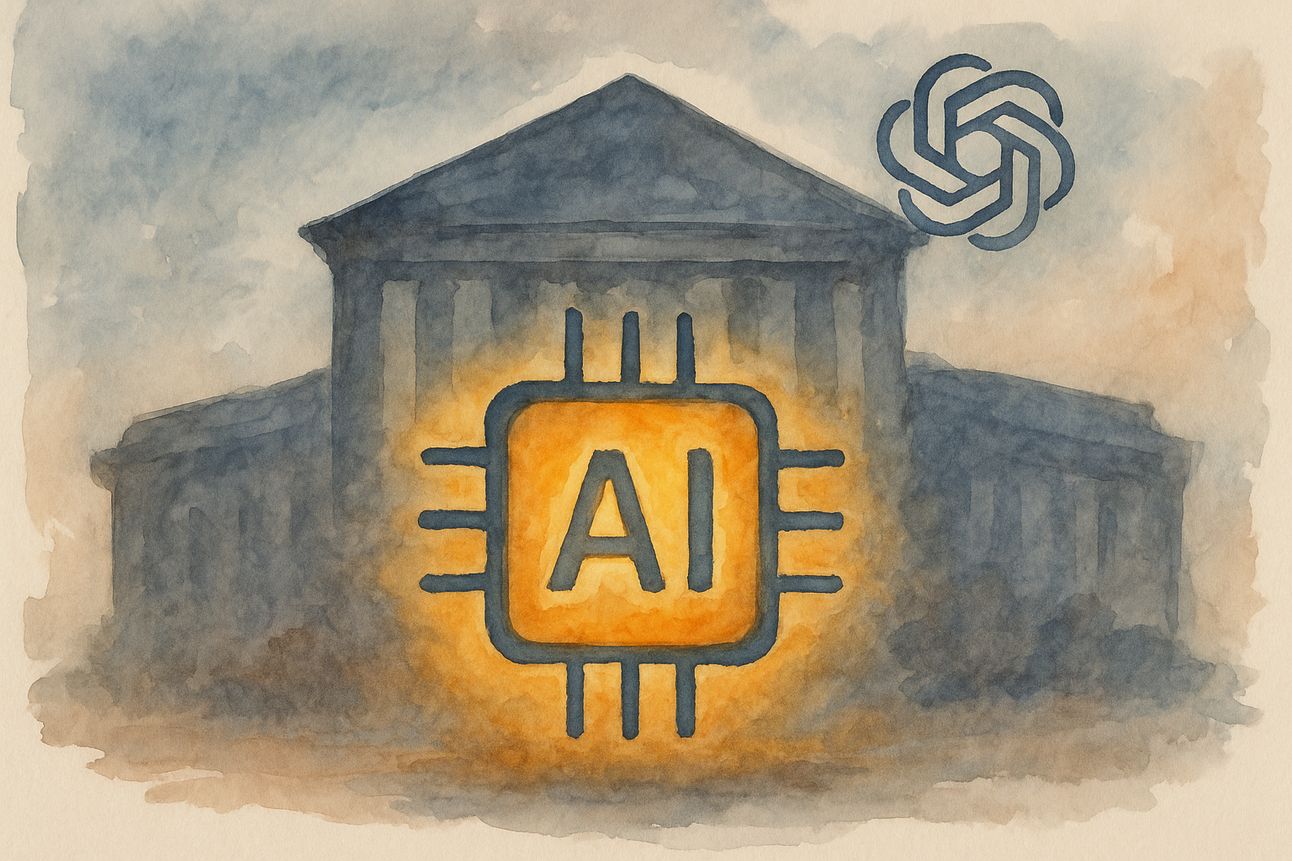- The Recap AI
- Posts
- Google's Gemini 2.5 family goes pro
Google's Gemini 2.5 family goes pro
PLUS: Amazon's AI job cuts, OpenAI's $200M military deal, and Hexagon's new humanoid robot
Good morning, AI enthusiast.
Google is making its Gemini 2.5 family of models production-ready, signaling to developers and enterprises that the powerful AI tools are now stable for building applications.
The launch solidifies a three-tiered system with Pro, Flash, and the new Flash-Lite, designed for different performance and cost needs. With features like a controllable ‘thinking budget,’ is Google's versatile toolkit the new standard for tailored AI development?
In today’s AI recap:
Google’s Gemini 2.5 models go pro
A new AI Training Video (watch here)
Amazon’s AI-driven workforce plan
OpenAI signs $200M deal with the DoD
Hexagon unveils new industrial humanoid
Google's Gemini Goes Pro

The Recap: Google is making its powerful Gemini 2.5 Pro and speedy 2.5 Flash models generally available, signaling they are stable for production use. The company also introduced a preview of Gemini 2.5 Flash-Lite, its fastest and most cost-efficient model yet, by expanding its Gemini 2.5 family.
Unpacked:
The Gemini 2.5 family now offers a clear three-tier system: Pro for complex reasoning and coding, Flash for speed at scale, and the new Flash-Lite for high-volume, latency-sensitive tasks like translation and classification.
Moving to “Generally Available” means developers and enterprises can build with confidence on a production-ready foundation, with companies like Snap and SmartBear already integrating the models into their products.
A key feature is the controllable “thinking budget,” which allows developers to adjust how much the model reasons before responding, balancing performance and accuracy for the specific task at hand.
Bottom line: This launch provides developers a versatile toolkit to match the right AI model to the right job, from complex agentic workflows to simple, high-speed tasks. Google is solidifying its offering to compete across every segment of the AI model market, giving enterprises more tailored options.
Amazon's AI Reckoning

The Recap: Amazon CEO Andy Jassy announced in a candid memo to employees that he expects AI to reduce the company's corporate workforce over the next few years, framing it as a push for greater efficiency and invention.
Unpacked:
Jassy's vision focuses on "AI agents" that automate rote tasks, enabling employees to focus more on strategy and innovation.
This move reflects a broader industry trend, with leaders at companies like Shopify also urging teams to use AI before increasing headcount.
Amazon is already deeply invested, with over 1,000 Generative AI services and applications currently built or in development across the company.
Bottom line: Jassy's announcement is a direct call for professionals to become proficient with AI to remain valuable in the evolving workplace. This statement from one of the world's largest employers marks a clear shift where AI integration is now a central pillar of corporate strategy and workforce planning.
AI Training
The Recap: In this video, we walk through the step-by-step process that you can follow to recreate the viral Bigfoot style vlogs with ChatGPT and Google's VEO 3. You can use this same process to reverse engineer any VEO 3 content.
P.S We also launched a free community for AI Builders looking to master the art and science of building AI Automations — Come join us!
OpenAI's Military Maneuver

The Recap: OpenAI has secured a $200 million contract with the U.S. Department of Defense. The deal aims to prototype frontier AI capabilities to address national security challenges.
Unpacked:
The DoD's announcement specifies the work covers "warfighting and enterprise domains," while OpenAI's announcement focuses on administrative tasks, healthcare, and cyber defense.
This partnership is the first under the company's new OpenAI for Government initiative, signaling a strategic push to embed its technology across federal, state, and local agencies.
The deal follows OpenAI's removal of its explicit ban on "military and warfare" applications from its usage policy last year, a change that paved the way for deeper defense collaboration.
Bottom line: This contract cements OpenAI as a major technology provider for national defense, expanding its influence beyond enterprise and consumer markets. The collaboration will intensify the ongoing debate over the ethical guardrails required for deploying powerful AI in military contexts.
Where AI Experts Share Their Best Work
Join our Free AI Automation Community
Join our FREE community AI Automation Mastery — where entrepreneurs, AI builders, and AI agency owners share templates, solve problems together, and learn from each other's wins (and mistakes).
What makes our community different:
Real peer support from people building actual AI businesses
Complete access to download our automation library of battle-tested n8n templates
Collaborate and problem-solve with AI experts when you get stuck
Dive into our course materials, collaborate with experienced builders, and turn automation challenges into shared wins. Join here (completely free).
The Robots Are Reporting for Duty

The Recap: Industrial tech leader Hexagon has unveiled AEON, a new humanoid robot built in collaboration with NVIDIA to perform a wide range of tasks and address labor shortages in manufacturing and logistics.
Unpacked:
AEON is designed for industrial applications like parts manipulation, inspection, and reality capture, with partners Schaeffler and Pilatus set to pilot the robot in their factories.
By using NVIDIA's Isaac Sim platform for training, Hexagon taught AEON core locomotion skills in just a few weeks, drastically reducing development time from a typical 5-6 month cycle.
The robot does more than just physical work; it scans its environment to create high-fidelity digital twins in Hexagon's reality capture platform, which integrates with NVIDIA Omniverse.
Bottom line: AEON's launch marks a significant step toward deploying versatile humanoids in complex industrial settings. Its true power lies in closing the loop between physical operations and digital twin simulations, creating a continuous cycle of data-driven improvement.
The Shortlist
OpenAI weighed a "nuclear option" of filing an antitrust complaint against Microsoft, signaling escalating tensions in their landmark partnership over OpenAI's restructuring and IP rights.
Adobe launched a dedicated Firefly mobile app, bringing its generative AI tools to iOS and Android and integrating new third-party models from partners like Luma AI, Pika, and Runway.
California published a new AI policy report commissioned by the governor, warning of "potentially irreversible harms" and outlining principles for regulation focused on transparency and risk mitigation.
Krafton released Orak, a new benchmark designed to evaluate the reasoning and performance of large language models across 12 different video games, from Pokémon to StarCraft II.
Anysphere introduced a $200 per month "Ultra" subscription for its popular AI coding tool, Cursor, offering power users 20 times more AI model usage and priority access to new features.
What did you think of today's email?Before you go we’d love to know what you thought of today's newsletter. We read every single message to help improve The Recap experience. |
Signing off,
David, Lucas, Mitchell — The Recap editorial team

